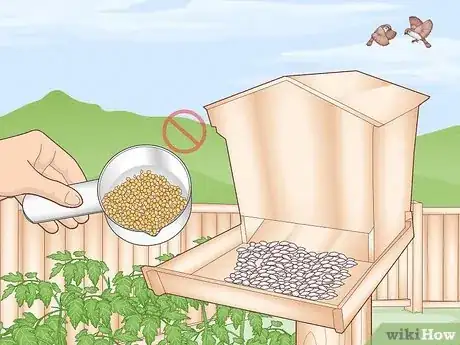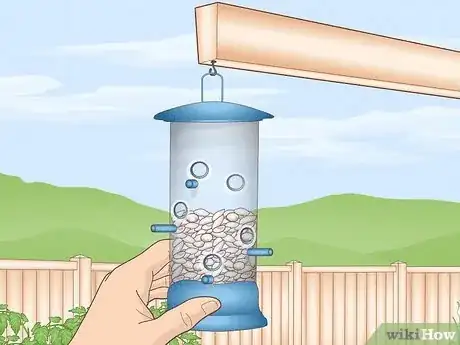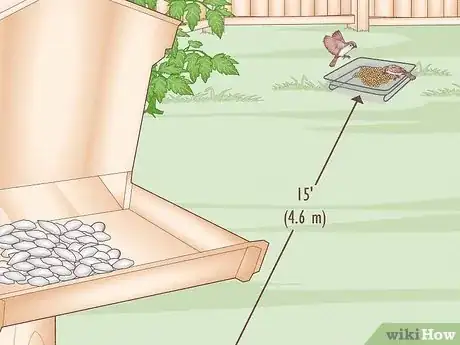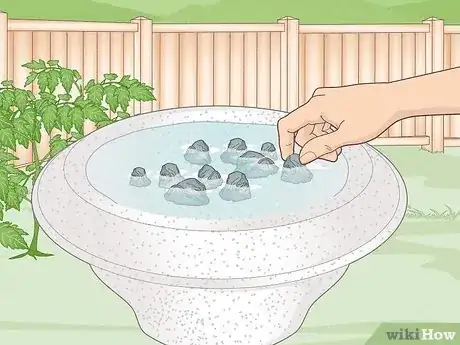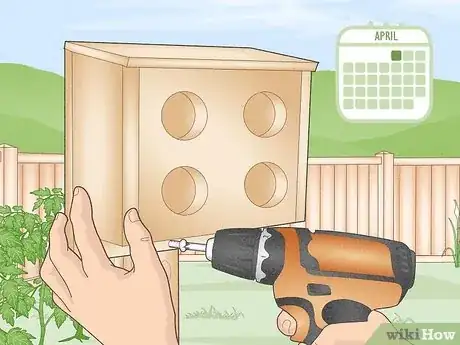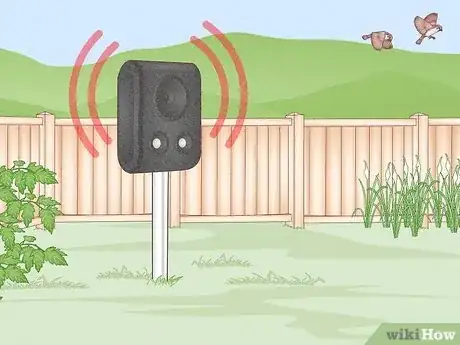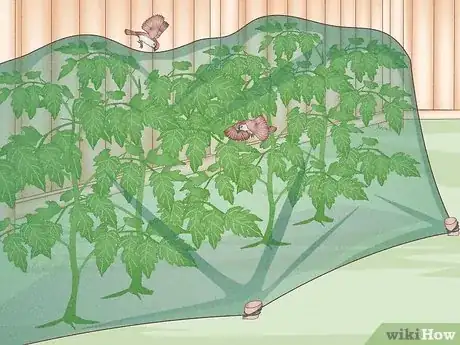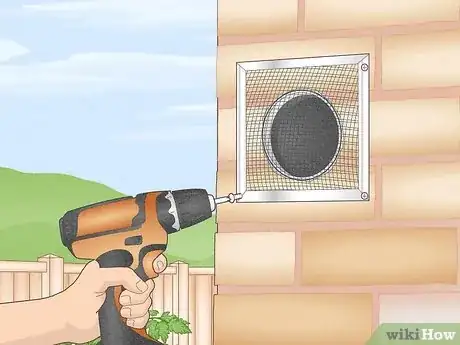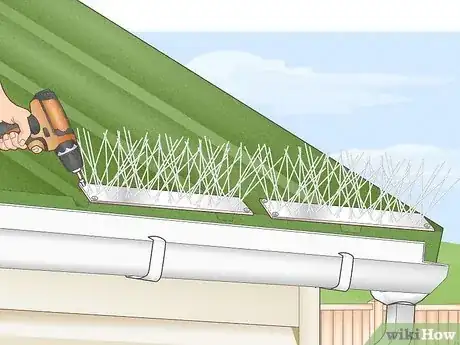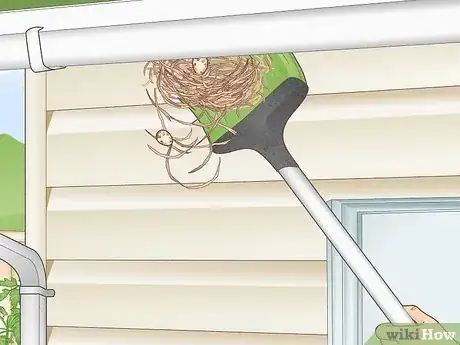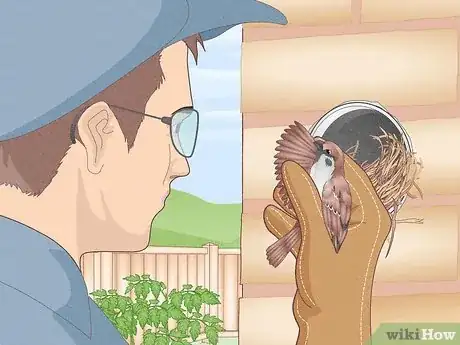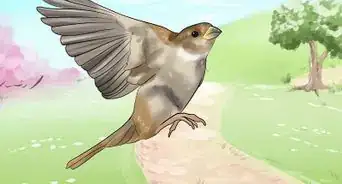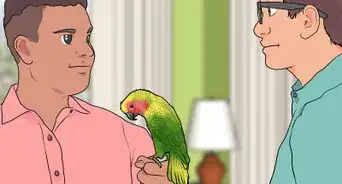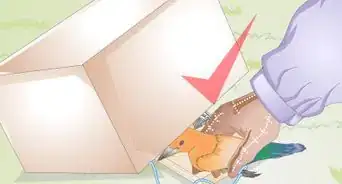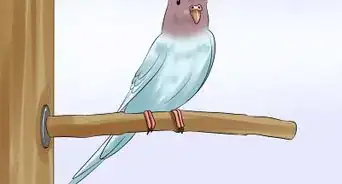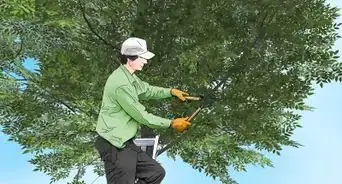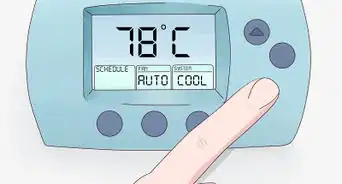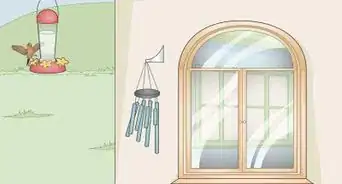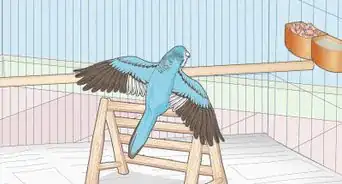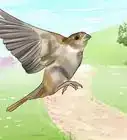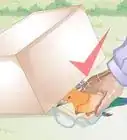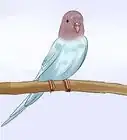This article was co-authored by Elmer Bensinger and by wikiHow staff writer, Jennifer Mueller, JD. Elmer Bensinger is a Pest Control Specialist with Eden Advanced Pest Technologies in Spokane, Washington. With over 20 years of experience, Elmer specializes in integrated pest management and products such as insecticides and rodenticides. He studied business at South Puget Sound Community College.
There are 14 references cited in this article, which can be found at the bottom of the page.
If you enjoy having a variety of native birds in your garden, you probably aren't the biggest fan of sparrows. These chunky little birds are an invasive species in North America that can be really aggressive toward native songbirds.[1] The good news is that there are easy—and humane—ways that you can make your property less attractive to them so they'll simply choose to go somewhere else. Read on to find out what you can do to keep sparrows from raiding your feeders, taking over your yard, and nesting around your home.
Things You Should Know
- Remove cracked corn, wheat, oats, millet, and bread scraps from your bird feeders.
- Use clinging mesh or tube feeders feeders with perches shorter than 5⁄8 inch (1.6 cm) to feed native songbirds.
- Cover crevices, vents, and openings with steel wire mesh so sparrows can't nest there.
- Clear out nesting materials before sparrows lay eggs to discourage them from nesting.
Steps
Expert Q&A
-
QuestionHow do you get sparrows out of your attic?
 Elmer BensingerElmer Bensinger is a Pest Control Specialist with Eden Advanced Pest Technologies in Spokane, Washington. With over 20 years of experience, Elmer specializes in integrated pest management and products such as insecticides and rodenticides. He studied business at South Puget Sound Community College.
Elmer BensingerElmer Bensinger is a Pest Control Specialist with Eden Advanced Pest Technologies in Spokane, Washington. With over 20 years of experience, Elmer specializes in integrated pest management and products such as insecticides and rodenticides. He studied business at South Puget Sound Community College.
Pest Control Specialist Start by sealing up the house by installing a quarter-inch mesh screen over all the vents and openings in your home, except from the one where the birds are entering and exiting. Then, have someone flush the birds out of the attic. After they exit through the one open vent, cover it with mesh so the birds can't get back inside.
Start by sealing up the house by installing a quarter-inch mesh screen over all the vents and openings in your home, except from the one where the birds are entering and exiting. Then, have someone flush the birds out of the attic. After they exit through the one open vent, cover it with mesh so the birds can't get back inside.
References
- ↑ https://www.allaboutbirds.org/guide/House_Sparrow/overview
- ↑ https://www.humanesociety.org/resources/what-do-about-house-sparrows
- ↑ https://birdwatchinghq.com/stop-house-sparrows/
- ↑ https://www.allaboutbirds.org/news/how-to-choose-the-right-kind-of-bird-feeder/
- ↑ http://www.sialis.org/hosp.htm
- ↑ https://birdwatchinghq.com/stop-house-sparrows/
- ↑ https://www.humanesociety.org/resources/what-do-about-house-sparrows
- ↑ https://extension.psu.edu/water-for-wildlife-bird-baths-and-backyard-ponds
- ↑ https://www.allaboutbirds.org/guide/House_Sparrow/overview
- ↑ https://www.humanesociety.org/resources/what-do-about-house-sparrows
- ↑ http://www.nabluebirdsociety.org/PDF/NABSFactsheetHouseSparrowControl.pdf
- ↑ https://extension.missouri.edu/publications/g9447
- ↑ https://www2.ipm.ucanr.edu/agriculture/grape/Birds/
- ↑ https://extension.usu.edu/pests/schoolipm/structural-pest-id-guide/sparrow
- ↑ https://extension.psu.edu/controlling-birds-around-farm-buildings
- ↑ https://extension.psu.edu/controlling-birds-around-farm-buildings
- ↑ https://catalog.extension.oregonstate.edu/em9286/html
- ↑ https://news.extension.uconn.edu/2014/07/16/house-sparrows/#
- ↑ http://www.sialis.org/hosp.htm
- ↑ http://www.sialis.org/hosp.htm
- ↑ https://nestwatch.org/learn/all-about-birdhouses/managing-house-sparrows-and-european-starlings/
